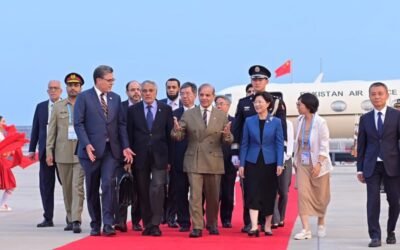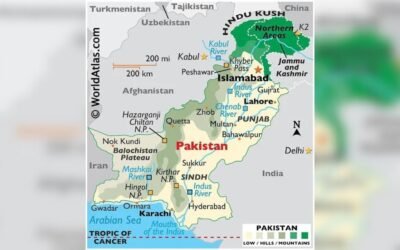Historical Context
Since 1947, Afghanistan has claimed a separate “Pashtunistan” inside Pakistan’s North-West Frontier. The Durand Line, drawn by the British, had split the Pashtun people. Kabul never fully accepted this border. Many Afghans saw it as illegitimate. Successive Afghan regimes revived the Pashtunistan demand at different times. These included King Zahir Shah’s monarchy, President Daoud Khan’s republic, and later the communist governments in Kabul. Each regime challenged Pakistan’s right to rule its Pashtun areas. Some even called for an autonomous Pashtunistan or annexation of Pashtun lands.
Pakistan, however, secured its frontier in 1947 and defended its borders firmly. Most Pakistanis, including Pashtuns in the NWFP, did not push for separation. Islamabad consistently rejected Afghan claims. The Pashtunistan dispute is often linked with great-power rivalry. During the Cold War, Afghan aspirations became part of the U.S.-Soviet contest.
Soviet Propaganda and the Pashtun Question
During the interwar years and the Cold War, the Soviets worked to spread communism through propaganda and revolution. They targeted the Pashtuns because of their location between South and Central Asia. Moscow claimed that Pashtuns and Russians shared cultural and linguistic roots. These claims were false. The two people had very different histories. Russians came from northern Europe. Pashtun origins remain debated, with some ties to Khorasan and others to Arabia. Communists exploited the lack of scientific studies. They disseminate pseudo-academic works to lend credibility to these myths. They aimed to build soft power and to influence Pashtun politics. They used Pashtun nationalist groups as tools of Soviet strategy. The plan was to weaken resistance and prepare the ground for annexation. The idea was that the Pashtuns would welcome the Soviets as kin. In the later Cold War, the United States countered this effort. Washington used Germany as a substitute, pushing the narrative that Germans and Pashtuns were distant brothers. This served as a countermeasure during the Soviet-Afghan War.
USSR’s Role in the Pashtunistan Campaign
In the 1960s and 1970s, the Soviet Union backed Afghanistan’s campaign against Pakistan’s Pashtun areas. In 1960-61, Afghan forces armed with Soviet weapons launched two incursions into Pakistan’s Bajaur District. Pakistan repelled both attacks. Pakistan accused Afghan troops and agents of incursions, backed by Soviet arms. Afghanistan claimed Pakistan oppressed Pathans. The USSR supported Kabul’s “Pashtunistan” demand. Pakistan responded with airstrikes and arrests of Afghan agents. Ayub Khan warned he would use full force. Pro-Afghan tribal rulers in Dir were deposed, and reforms were introduced to secure the frontier. The move crippled Afghanistan’s economy and tied it more closely to the Soviet Union. These clashes sealed the Soviet-Afghan partnership.

Source: Pakistan Defence
The crisis deepened in 1973 when Daoud Khan seized power in Kabul. He was closely aligned with the USSR. Daoud revived the Pashtunistan policy. He began arming and training militants to fight inside Pakistan’s Pashtun districts. The Soviet Union fully supported him. Moscow supplied weapons, funds, and training to Afghan forces seeking to carve out Pakistani territory. The Soviet aim was clear: weaken Pakistan, a close ally of the U.S. and China. Yet, the Soviets worked mostly in the shadows. They wanted to avoid angering other Muslim states. Throughout the 1960s and 1970s, the USSR sustained Afghanistan’s Pashtun campaign. It used the issue as a proxy front against Pakistan.
Pakistani Response and Outcome
Pakistan responded by strengthening its frontier and seeking external allies. Prime Minister Zulfikar Ali Bhutto moved closer to the U.S., while by 1975, even King Zahir Shah tried to curb Daoud’s militancy. Bhutto tasked the ISI with countering Kabul’s campaign, secretly supporting Afghan factions opposed to Pashtunistan. U.S.-Saudi assistance was directed mainly toward Islamist mujahideen rather than monarchist or Pashtun-nationalist groups. In effect, Islamabad combined military deterrence with the backing of anti-Pashtunistan Afghans to weaken Soviet-supported pressure.
When the Soviets invaded Afghanistan in 1979, Pakistan, with U.S. support, became the main backer of the Mujahideen. The wider war ended the Pashtunistan campaign. Pakistan preserved its territorial integrity and gave up no land. After the Soviet withdrawal in 1989 and the fall of the communist regime, open support for Pashtun separatism disappeared. Even the Taliban regime of 1996-2001, though Pashtun-led, did not demand changes to the border. Pakistan instead used its ties with the Taliban for strategic depth. In the 1990s and later, Islamabad handled Pashtun issues through intelligence and diplomacy. It often mediated between Afghan factions rather than relying on outside-backed insurgency.
Current Relevance
The Soviet Union collapsed in 1991, and Russia’s role today is very different. Pakistan now seeks stability on its western frontier through cooperation with neighbors and allies. Islamabad stresses border security and counterterrorism. It has also deepened ties with China and improved relations with post-Soviet Russia to balance regional powers. That Pakistan must strengthen its partnership with China and reduce reliance on the United States. In practice, Pashtun separatism is treated as a Cold War relic. The lesson for Islamabad is clear: foreign interference will not be tolerated. Today, Pakistan’s official stance emphasizes its partnership with Afghanistan, recognition of the Durand Line, and rejection of external interference.
Conclusion
During the Cold War, the USSR covertly backed Afghanistan’s Pashtun claims to weaken Pakistan. Islamabad responded by fortifying its defenses and building stronger alliances. With the Cold War long over, the Pashtunistan issue is no longer a pressing concern. Yet Pakistan stays alert against outside interference in its tribal areas, a policy shaped by its Soviet-era experience. Today, it advances its interests through diplomacy and internal measures instead of proxy wars.
You May Like To Read:







